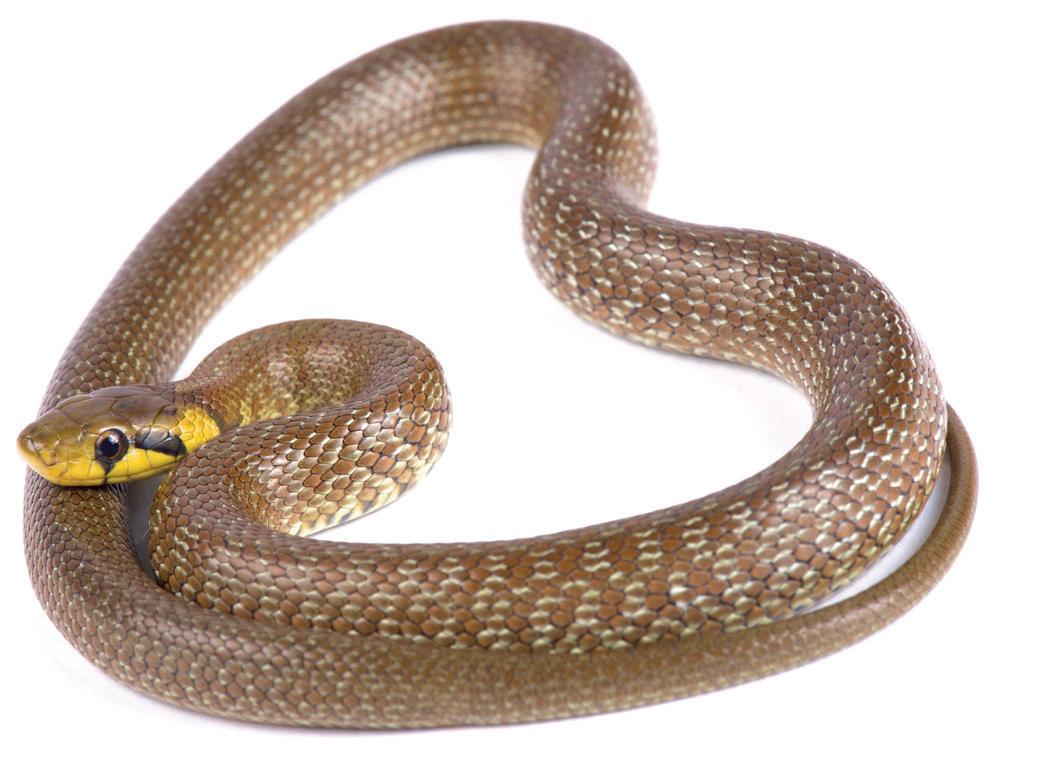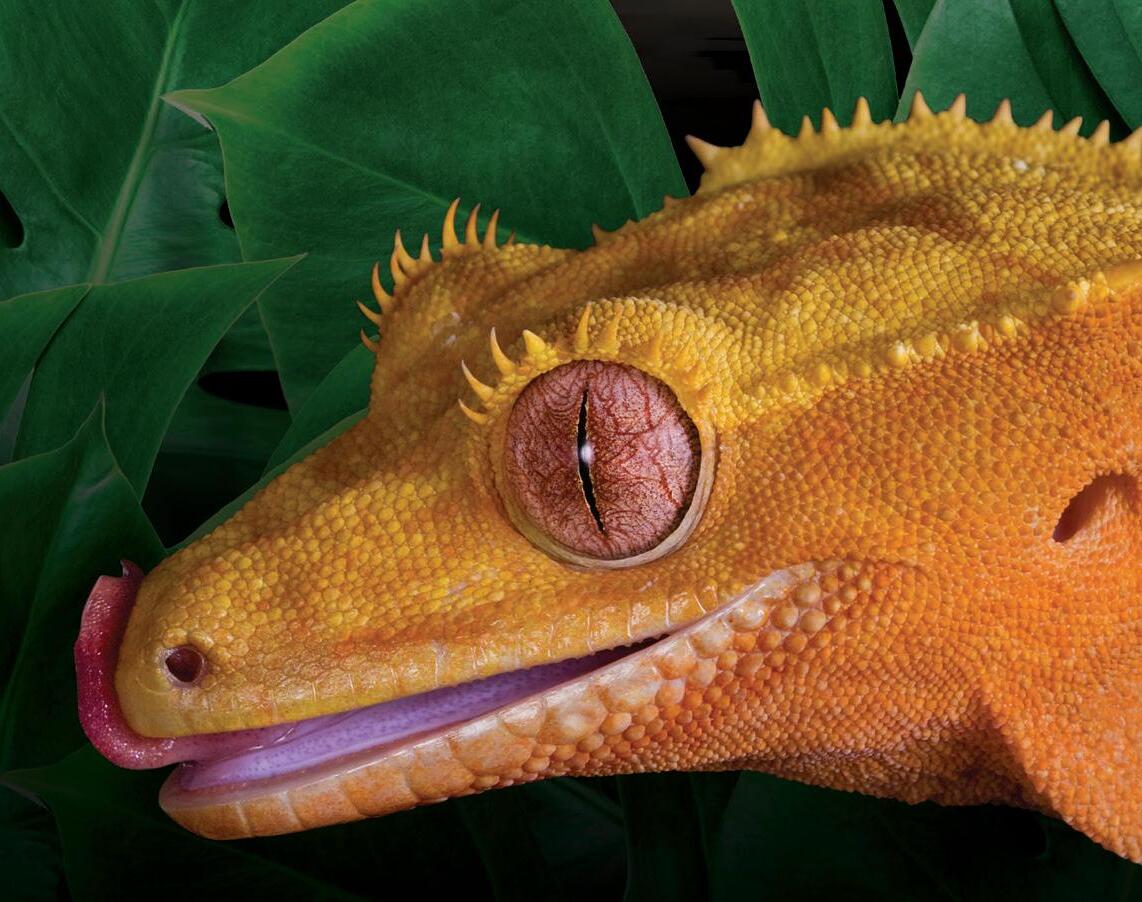
2 minute read
MYTH BUSTED
Is ‘invasive’ always a bad thing?
When we think of invasive species, we think of devastating impacts on the native flora and fauna in that area – cane toads, rodents, cat-eyed snakes, lionfish, Burmese pythons, and many more have had adverse effects on the habitats into which they were introduced. We also touched on invasive amphibians and the problems they pose as vectors of ranavirus and chytrid as well as poisoning any would-be predators with their toxins, with catastrophic results. But is there any way these accidental introductions of species can exist with neutral impact – even amicably?
Advertisement
In the UK, we have three snake species considered native: the grass snake (Natrix helvetica), adder (Vipera berus) and smooth snakes, found in southern England only (Coronella austriaca). There are, however, some ‘accidental’ populations of non-native snakes in the UK. The Aesculapian snake, Zamenis longissimus, is a nonvenomous Colubrid snake found originally across central Europe. Currently, there are three populations known: Conwy, near Welsh Mountain Zoo, Regent’s Canal near London Zoo, and Bridgend, Wales.
It’s thought that these snakes escaped as captive specimens and became established in those areas due to their tolerance for a range of environmental conditions, being found across Europe in varying habitats with variable seasonal temperatures. It’s speculated that they do well here in patches of sufficiently dense woodland, being habitually arboreal, and making the most of warmer conditions.
These snakes are considered cryptic by nature, and being found as high at 15-20m in trees, it’s understandable that they aren’t often spotted (despite reaching up to 200cm in total length). Some theorise there are more individuals around than currently thought; that they are successful in avoiding detection by tolerating shady forests and seeking arboreal niches. The Bridgend population was only recorded officially in 2020 but is thought to have persisted there for approximately two decades already.
So, how do we know they aren’t harmful to our local ecosystem? The short and sensible answer would be that we don’t know for certain – yet. There are some conclusions that can be made so far.
The primary diet of Aesculapian snakes is rodents, including rats, shrews and moles. They will also eat birds, and have been seen preying on other snakes and lizards, but very rarely. With this in mind, they shouldn’t be particularly competitive with our native snakes; grass snakes eat amphibians, smooth snakes don’t share habitat overlap with Aesculapians, and adders will eat whatever is going in their localities.
What’s also important here is that they do have predators in the form of larger mammals (badgers, mustelids, foxes) and birds of prey. So, unlike some other invasives, they won’t be able to overrun ecological niches free of any dampening of the population growth. After all, they have been estimated to have been present on UK soil since the 1970s, and have not become an overbearing presence in their three localities.
This accidental introduction of the species may have a positive shine to it. In much of its range throughout Europe, the Aesculapian snake is a protected species, even being critically endangered in some regions of Germany. Anthropogenic disturbances, and sometimes conflicts, have contributed to population declines.
While research is ongoing into the finer details of the habits and ecological roles of this species in England and Wales, it appears that a rarity may have occurred wherein a non-native species has blended almost harmoniously into a new environment. For the time being, we can tentatively appreciate having one more serpent on the UK roster, in what is a relatively lacking country for reptiles.
Did you know – the name “Aesculapian” cites the Rod of Aesculapius, the symbol of human medicine since Ancient Greece. It was held by the Greek god of healing and medicine, Asclepius.











